Nuthin But a G Thang - Mix & Production
Hip-hop’s G-Funk: the musical brainchild of Dr. Dre and Snoop Dogg. Its roots have spread throughout rap and hip-hop, changing the landscape of modern music permanently. Dre’s most legendary release, The Chronic, is the quintessential G-Funk album. Because of this benchmark contribution to modern music, and because of relentless chart domination since The Chronic, Dre will forever be an icon. What most distinguishes Dre is not his compositional wizardry or studio ingenuity, but rather his status as a fastidious maestro, paying painstaking care in his musical direction. Dre is an overseer: he unites talented artists and, with uncompromising perfectionism, he transforms their collective potential into music that makes history. Along with song’s like “Let Me Ride,” “Nuthin But a G Thang” is one of the finest examples of G-Funk there is. Enjoy this free online preview. Hit Talk’s full downloadable G Thang Hit Report reveals the production details of Dre’s famous hit song, plus teaches you the essence of one of Rap’s most influential sub-genres.
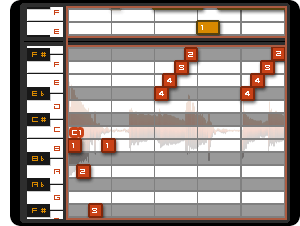 |

Nuthin But a G Thang - Melody Map Preview
Dre backs every song with an inventive rock-solid bassline. Part of the essence of Funk, and hence G-Funk as well, is the presence of a funky bassline. This is a good reason for Dr Dre to choose “I wanta do Something Freaky to You,” by Leon Haywood as the sample on which G Thang is based. If you’re not a bass player, playing this bassline on the keys is quite easy. Above, in red, are the keyboard finger positions for the bassline melody played on the left hand. It’s a straightforward pattern: when playing the four 16th notes that rise from Eb to F#, try sliding off the Eb key onto E with the 4th finger. What makes this bassline so perfect is its staccato nature. By using short runs of 16th notes, Leon Haywood was able to get away with using less notes. Many amateur producers, and even some noteworthy pros sync the bassline up with the kick, or used sustained bass notes. The G Thang bassline is more original and articulate, leaving quarter note spaces between each run of 16th notes for an extremely dynamic and uncluttered bass performance. In our full Hit Report, below, we analyze some of the song’s synth melodies in addition to the bassline, and show how all the melodies fit together during the transitions between the song’s verses and hooks.
Nuthin But a G Thang - Filters and Wah Techniques
In our full report, we’ve commented on several of the original tracks in Haywood’s song, as well as many of the production elements added by Dre. Another part of what makes the Leon Haywood sample well-suited to the G-Funk genre is its laid-back groove. For this purpose, the guitar tracks in Leon Haywood’s original track are perfect, setting the mood just right with a soft attack and wah pedal sweeps. A wah pedal is basically a foot-controlled modulated highpass filter. Hence it’s quite easy to reproduce that effect using any DAW that incorporates a parametric equalizer or resonant filters. Here we’ll show you in 3 steps.
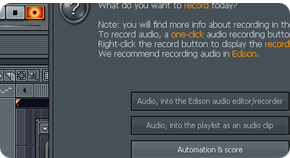 Step 1 – Arm to Record
Step 1 – Arm to Record
Using FL Studio’s parametric EQ as our example, start by arming the sequencer to record. FL Studio has a recording filter which lets you choose whether you’re going to record audio or midi. Since you’ll be manually dragging the highpass filter, select the “automation and score option.
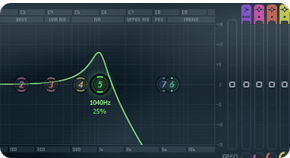 Step 2 – Q and Frequency Settings
Step 2 – Q and Frequency Settings
To the right is FL Studio’s Parametric EQ. We’ve set the 5th filter to highpass, with a medium Q and gain. starting with the highpass between 1 and 2 kHz, the same kind of wah effect you hear in the Leon Haywood break can be achieved by manually sweeping the filter up to the 5 kHz range, and back down. This is one way to achieve a wah effect, but don’t be afraid to experiment with other filters.
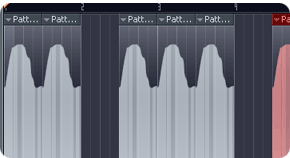 Step 3 – Copy and Paste your Automation
Step 3 – Copy and Paste your Automation
You might want to perform each sweep of the highpass filter manually, or for the sake of consistency you can do what we’ve done in at right: copy and paste the best sweep. One thing to keep in mind if you edit any automation is smooth transitions. We’ve sliced a sweep that ends on the same frequency it begins on. Thus, there are no instantaneous jumps in filter frequency.
Nuthin But a G Thang In-Depth - The Full Downloadable Report
So much can be learned from modern Hip Hop classics. Nuthin but a G Thang is hailed as one of Hip Hop’s most significant landmarks. In our full downloadable Hit Report, we explain some of the mixing details Dre would have had to take into consideration while creating the song. In addition, we explain the unique production tricks that have made this song into the classic masterpiece that it has become.
| Order the “Nuthin But a G Thang” Hit Report & Get it all… | |
 Nuthin But a G Thang Song Format Map! (View All) Nuthin But a G Thang Song Format Map! (View All) Nuthin But a G Thang Frequency Separation Map! (View All) Nuthin But a G Thang Frequency Separation Map! (View All) Nuthin But a G Thang Song Arrangement Map! (View All) Nuthin But a G Thang Song Arrangement Map! (View All) Nuthin But a G Thang Melody Map! (View All) Nuthin But a G Thang Melody Map! (View All) Nuthin But a G Thang Track Detail Map! (View All) x2! Nuthin But a G Thang Track Detail Map! (View All) x2! Nuthin But a G Thang - 11 Tracks of Music Production Analysis! Nuthin But a G Thang - 11 Tracks of Music Production Analysis! Nuthin But a G Thang Song Arrangement Step-by-Step Report! Nuthin But a G Thang Song Arrangement Step-by-Step Report! Nuthin But a G Thang Lyrical Flow Report! Nuthin But a G Thang Lyrical Flow Report! Nuthin But a G Thang Wah Effect Step-by-Step Report! Nuthin But a G Thang Wah Effect Step-by-Step Report! Nuthin But a G Thang Sample Equalization Step-by-Step Report! Nuthin But a G Thang Sample Equalization Step-by-Step Report! Nuthin But a G Thang Creative Sample Phrasing Report! Nuthin But a G Thang Creative Sample Phrasing Report! Nuthin But a G Thang Music Production with FL Studio! Nuthin But a G Thang Music Production with FL Studio! Nuthin But a G Thang Keyboard Technique Reports! Nuthin But a G Thang Keyboard Technique Reports! Nuthin But a G Thang Autopan Report! Nuthin But a G Thang Autopan Report! Super Bonus: VIPKIT#23, 105 Samples, $30 value! Super Bonus: VIPKIT#23, 105 Samples, $30 value! |
|
| Enhance Your Music Production Skills Today! |
|







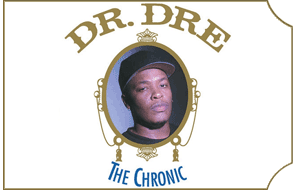

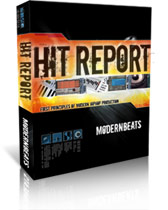
 GET 20% OFF COUPON INSTANTLY W/ SIGN-UP!
GET 20% OFF COUPON INSTANTLY W/ SIGN-UP!
 Check Out Hot Artists & Music Producers discovered through Song Submit!
Check Out Hot Artists & Music Producers discovered through Song Submit!



Thanks for your work and your insights into the incredible music that has been created by the best producers. It is greatly appreciated.
My questions is how does Dre get such great separation on the the instruments and the drums. I mean especially the drums in G Thang. They hit hard and you can hear all the little details in each sound. You can even hear the reverb on that snare clear!
music is a simple thing mostly if there is natural talent…most softwares like fruityloops have already default settings and sample files for various genres of music which have been compressed but sometimes does not concur with what u want…so i think music production is all about making use of ur ears and adjusting stuff till you u r satisfied…i neva believed in a particular strict/technical method of sound engineering….i dont think someone like pharell n scot storch r technical or trained producers, i jus think the r jus talented in putting instruments and making them sound great…anything goes as far as its not noise.
Ugochukwu is not lying its all about bringing reasonable sounds together that will make sense and thats all but its just the mixing That is a bit difficult
@Steve: In regards to the snare’s reverb tail, if you listen really close, you’ll the kick and the bass are dead silent for the exact length of the snare. There very little lowend in the snare itself, so dre uses the reverb to fill in the space that is void with out the kick and bass.
It’s really ingenious on dre’s part.
I have a question to modernbeats…
I learned the major & minor scales…
my question is: do i compose a song only in one scale? or do i have to use more scales???
BigBoi, you should look up chord progressions. You compose a song in a certain key, and usually you’ll use one or two scales for a song. But sometimes there’s a key change, for example during the bridge, and in that case you’ll need to switch scales. A good practice is to get as many songs under your belt as you can, and try to internalize a sense of song structure.
Sup HT,
I’m using Logic Pro 9. I have a DVD of the Yamaha Motif sounds that are categorized in separate folders. I would like to use these sounds within the ESX24, however they aren’t in ESX24, SF2, etc… format. Just WAV files.
I know I can use them if I place them within the ESX24 edit page and map them, but there are too many sounds to map individually in a considerable amount of time. Also if I use the automatic map or contiguous mapping the separate sounds will either be mapped on top of each other or one sound per note.
What I want to achieve is patches of each individual sound and use the banks individually like the a native Logic preset for example- if there are several guitar sounds I’d like a patch/preset for each guitar that is mapped across the C1-C8 piano roll, so I can play scales/chords,etc…
Is there any program that I can use to achieve this or will I have to map them myself?
I’ve heard of AKAI sample converter, but I think it only converts AKAI sample disc.
Any suggestions, Please help ASAP….
Thanks,
-T.
Heya Terrance; Hope all’s well,
I think the Emulator X2 has that function. Apparently the Propellerhead Reason samplers have an “automap samples” function. You can google that phrase to find out more. Hope that helps. Of course, you can always just forego your own mapping for pre-mapped sample packs a la ModernBeats ;)
Best,
b
Thank you for the reply,
I’ll give that a shot and let you know how that comes out…
You know I’m a faithful MB/HT customer, just waiting on something more advanced from you guys on the kits! …lol… a la- pre mapped synths… Ooo!
Hey the HT video is Super Awesome…
are you guys gonna make some Hit talk videos???
I know I’d really like a streaming visual to go with the awesome reports that I’ve read.
You gotta do me a solid- a la “Juno”
hehe. Terrence, we’ll try to meet you halfway. New report’s out within a week. To do video the way we’d want to do video would just consume too much of our time at the moment. Maybe some day we’ll get a solid proposal from a superb producer who also does video instruction.
Hi guys,can u get the tutorials coming? am dying 2 see more,they are great!
i will like u guys to lay more emphasis on chord progressions in the upcoming tutorials. Thanks!
Thanks Min,
Yeah, we want to publish the current report before the end of June. It’s gonna be a good one. We’ll take your suggestion into consideration.
Hahaa.. I luv tha info.. Thanks very much..
my brother wanted to know something about this, ill point them to your webpage, thanks